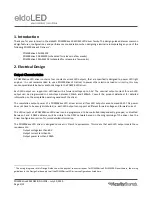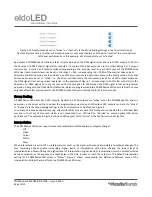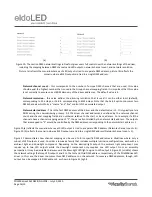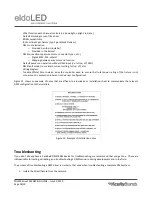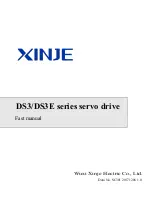
POWERdrive 50W DESIGN GUIDE
–
July 30, 2020
Page 5/19
LED load configurations
Each LED output of the POWERdrive LED driver is powered by a separate current source to enable independent control of
each LED output, regardless of the LED load that is connected. However, this flexibility does impose constraints on how
LED light engines can be connected to the LED outputs. Figure 3 shows the acceptable LED load configurations for a
POWERdrive LED driver. Multiple LED light engines can be connected either in series or in parallel if the total LED load (in
terms of cumulative forward voltage and output current) does not fall outside the operating window for each LED output,
as specified in the product datasheet. Any series/parallel connection of LED loads shall be designed considering the
variations in forward voltage and/or current over the full operating range of the luminaire. Figure 4 shows LED load
configurations that are not acceptable for a POWERdrive LED driver. In particular:
-
multiple LED outputs cannot be connected in series to power an LED load with a forward voltage > 55V
-
multiple LED outputs cannot be connected in parallel to deliver a drive current that exceeds the maximum drive
current that can be delivered by a single LED output
-
common-anode or common-cathode configurations are not acceptable.
Cross connecting multiple LED outputs of a POWERdrive LED driver may result in permanent damage to the LED driver
itself and/or the LED light engine(s).
Figure 2:
Smaller wire sizes can be accommodated in combination with a ferrule
.
POWERdrive
DMX
✓
Multiple LED light engines can be connected in parallel to a single LED output
POWERdrive
DMX
✓
Multiple LED light engines can be connected in series if the total string voltage remains < 55V
Figure 3: These LED load configurations are acceptable.



